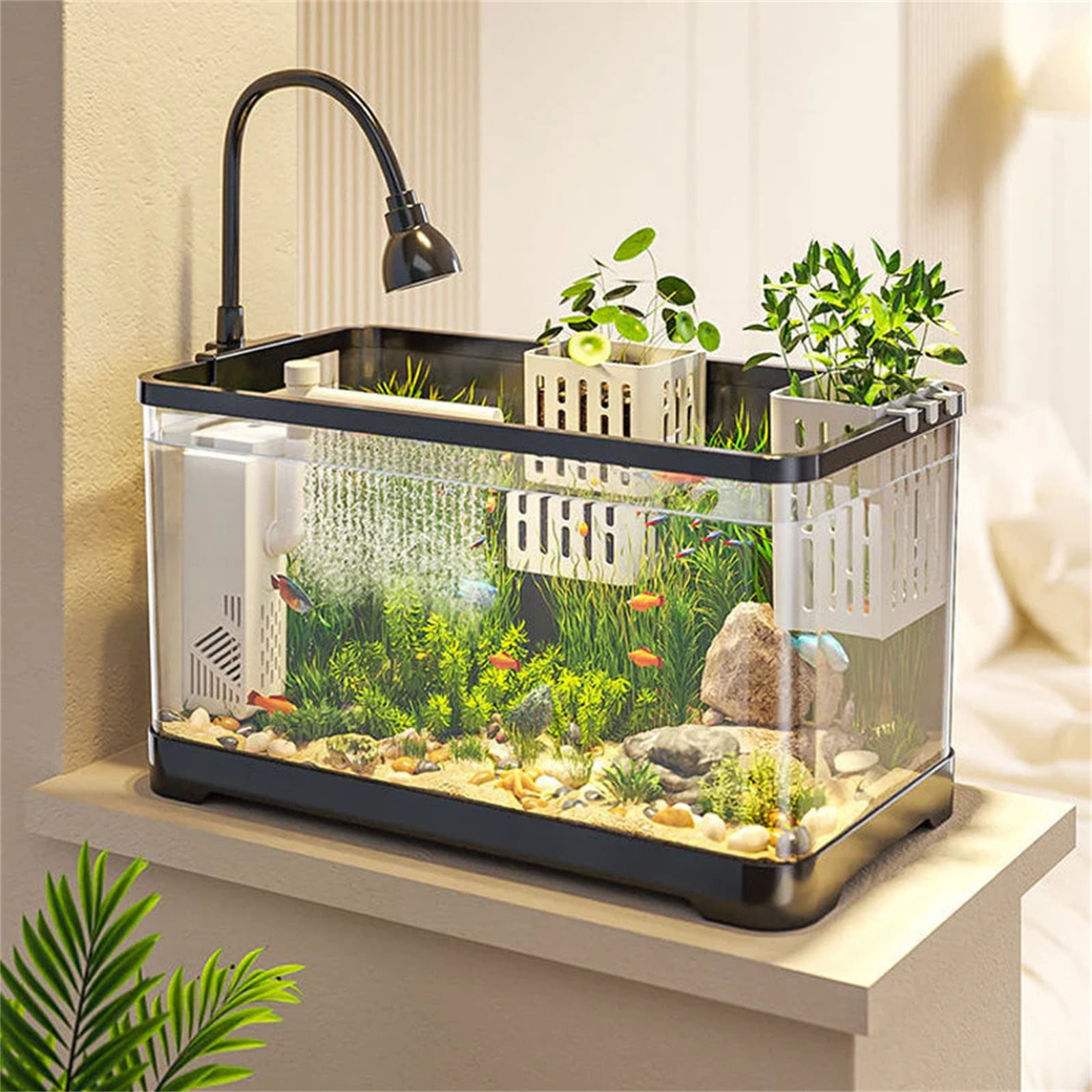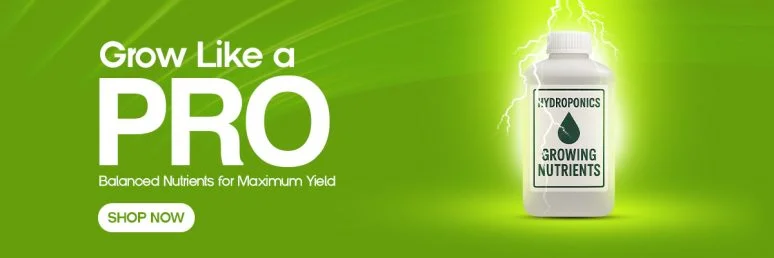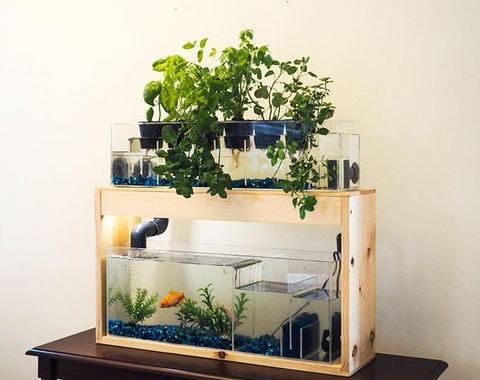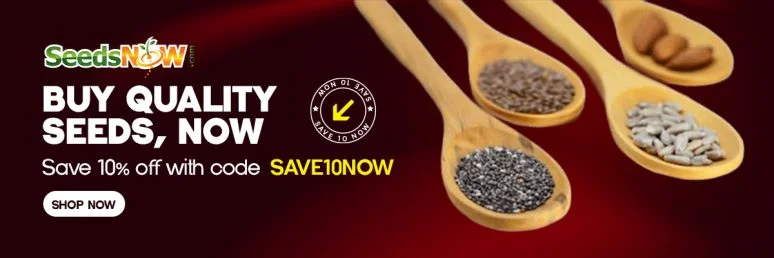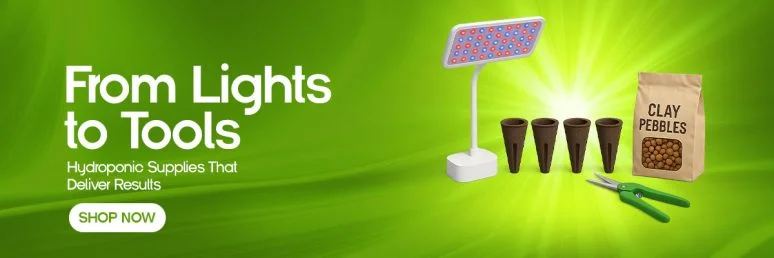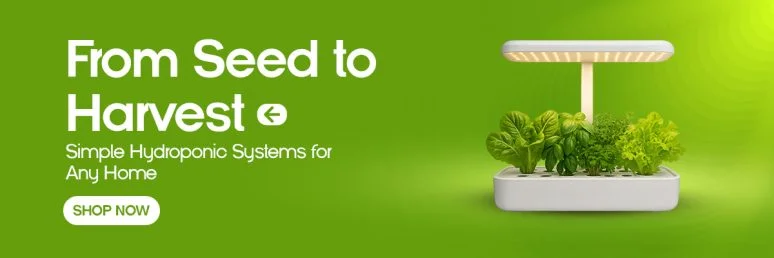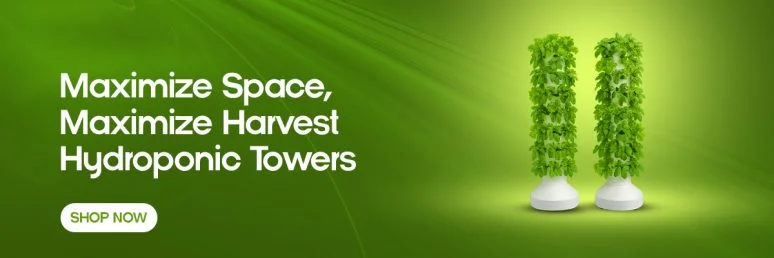Top 4 Benefits of Fish Tank Hydroponics for Home Growers
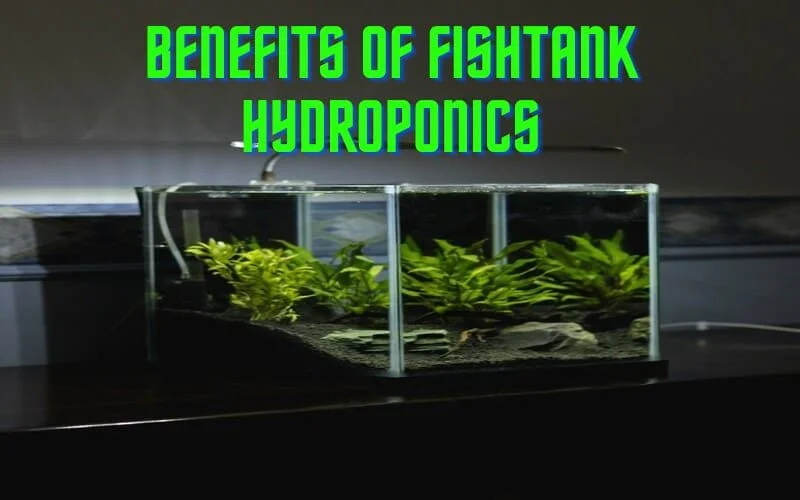
Key Takeaways
- Fish tank hydroponics (aquaponics) creates a self-sustaining ecosystem where fish waste provides all the nutrients plants need for growth
- These systems use up to 90% less water than traditional gardening methods through efficient recirculation
- Plants grown in fish tank hydroponics systems typically grow 30-50% faster with higher yields than soil-based gardens
- You can grow food year-round regardless of outdoor weather conditions when setting up an indoor system
- Hydroponic Growing offers comprehensive guidance for beginners looking to start their first aquaponics system with minimal investment
Fish tank hydroponics, also known as aquaponics, is revolutionizing how home growers produce food. This ingenious system combines raising fish with growing plants in a symbiotic relationship that benefits both. Unlike traditional hydroponics that requires chemical nutrients, Hydroponic Growing experts have found that aquaponics creates a natural ecosystem where fish waste provides all the nutrition plants need, while plants clean the water for the fish.
The marriage of aquaculture (fish farming) and hydroponics creates one of the most efficient growing systems available to home gardeners today. By harnessing natural biological processes, you’ll not only grow food more efficiently but also create a fascinating ecosystem that’s educational and beautiful to observe. The closed-loop system mimics nature’s perfect balance while producing two harvests – fresh vegetables and fish – from a single input.
Fish Tank Hydroponics: The Ultimate Self-Sustaining Garden System
“Hydroponics Growing System Fish Tank …” from www.amazon.com and used with no modifications.
At its core, fish tank hydroponics creates a miniature ecosystem right in your home. Fish produce ammonia-rich waste that would normally become toxic in a regular aquarium. However, in an aquaponic system, beneficial bacteria convert this waste into nitrates – the perfect food for plants. As plants absorb these nutrients, they simultaneously clean the water, which then returns to the fish tank, creating a continuous cycle that requires minimal intervention once established.
Unlike traditional gardening that demands frequent watering, weeding, and fertilizing, a properly set up aquaponics system largely maintains itself after the initial balancing period. This self-regulating nature makes it particularly appealing for busy individuals who want fresh produce without the constant maintenance. The system relies on natural processes rather than synthetic inputs, making it an environmentally friendly choice for conscious consumers.
Benefit #1: Create a Complete Ecosystem Where Fish Feed Your Plants
“SUSHANG Fish Tank Hydroponic Basket …” from www.walmart.com and used with no modifications.
The most remarkable aspect of fish tank hydroponics is how it transforms fish waste – normally a problem in aquariums – into valuable plant nutrition. In a traditional fish tank, ammonia builds up and requires frequent water changes. In aquaponics, this “waste” becomes the engine that powers plant growth. The system elegantly solves two problems at once: cleaning fish water while feeding plants without synthetic fertilizers.
How Fish Waste Becomes Perfect Plant Nutrition
When fish eat and produce waste, they release ammonia (NH₃) into the water. This compound is toxic to fish at high levels but serves as the foundation of the nutrient cycle in aquaponics. Beneficial bacteria that naturally colonize the system convert this ammonia first to nitrites (NO₂) and then to nitrates (NO₃). These nitrates are precisely what plants need for vigorous growth and development of foliage, flowers, and fruits.
This natural conversion process eliminates the need to purchase expensive hydroponic nutrients while producing results that often surpass traditional hydroponics. The fish essentially become living fertilizer factories, continuously supplying nutrients in forms plants can readily absorb. Unlike synthetic fertilizers that can build up harmful salts over time, the natural nutrients from fish waste are balanced and complete.
The Nitrogen Cycle in Action
The Aquaponics Nitrogen Cycle:
Fish eat food → Fish produce ammonia-rich waste → Nitrosomonas bacteria convert ammonia to nitrites → Nitrobacter bacteria convert nitrites to nitrates → Plants absorb nitrates → Clean water returns to fish → Cycle repeats continuouslyThis nitrogen cycle is the beating heart of any aquaponics system. When first setting up your system, this cycle takes approximately 4-6 weeks to establish fully. During this “cycling” period, the bacterial colonies develop and reach the population levels necessary to process all the fish waste efficiently. Once established, these beneficial bacteria maintain themselves with minimal intervention, creating a remarkably stable growing environment. For more information on setting up your system, explore this indoor garden guide.
Fish and Plant Combinations That Work Best Together
Not all fish species are equally suited for aquaponic systems. Tilapia remains the gold standard due to their hardiness, fast growth, and tolerance for varying water conditions. They thrive in temperatures between 75-85°F, which also happens to be ideal for many popular garden vegetables. Other excellent fish options include goldfish, koi (for ornamental systems), channel catfish, and bluegill.
On the plant side, leafy greens like lettuce, kale, spinach, and herbs typically perform exceptionally well in aquaponic systems. These plants thrive with the nitrogen-rich water from fish waste and grow rapidly. More demanding fruiting plants like tomatoes, cucumbers, and peppers can also succeed but generally require mature systems with higher fish densities to provide adequate nutrition during fruiting stages. For those interested in growing herbs, you might want to explore hydroponic dill microgreens for a fresh flavor grown at home.
The ideal ratio is approximately 1 pound of fish for every 1-2 gallons of water, paired with about 1 square foot of growing space. This balance ensures sufficient nutrients for plants without overcrowding the fish. Starting with fewer fish and gradually increasing the population as your system matures is often the safest approach for beginners. For those interested in maximizing plant growth, understanding how many hours of light hydroponic plants need can be crucial.
Benefit #2: Slash Your Water Usage by Up to 90%
“Build a Desktop Aquaponics System …” from gogreenaquaponics.com and used with no modifications.
One of the most impressive advantages of fish tank hydroponics is its extraordinary water efficiency. While traditional gardens typically lose water to soil absorption, runoff, and evaporation, aquaponic systems recirculate the same water continuously. This closed-loop design means you’ll only need to add water to replace what plants transpire and what evaporates—a fraction of what conventional gardens require.
Why Traditional Gardens Waste Water
In conventional soil gardening, as much as 70-80% of water applied to plants never actually reaches the roots. Much of it evaporates before absorption, drains beyond the root zone, or runs off the surface. This inefficiency requires frequent watering, especially during hot weather, putting strain on water resources and increasing utility bills for home gardeners.
Even traditional hydroponics, while more efficient than soil gardening, typically requires regular flushing and replacement of nutrient solutions to prevent salt buildup. These solution changes waste both water and expensive nutrients, creating a maintenance burden and environmental concern. For instance, knowing how many hours of light hydroponic plants need can also help optimize the growth process and reduce resource wastage.
The Recirculating Water System That Changes Everything
Aquaponics fundamentally reimagines water usage by creating a perpetual cycle. The same water continuously moves from fish tank to grow beds and back again, delivering nutrients and collecting waste in a perfectly balanced system. Water losses only occur through plant transpiration and surface evaporation, which typically amount to less than 10% of the system volume per week.
This remarkable efficiency comes from the biological filtration that happens naturally. As plants absorb nutrients from the water, they simultaneously filter it for the fish. The clean water then returns to the fish tank where the cycle begins again. Many systems operate for months with only minimal topping off required, even in dry climates. For more information on how aquaponics compares to hydroponics, you can explore additional resources.
Real Water Savings Compared to Soil Gardens
Studies comparing aquaponic systems to traditional gardening consistently show water savings of 85-90%. A system that might use just 10 gallons per week to top off evaporation could grow the same amount of produce that would require 100 gallons in a conventional garden. For environmentally conscious growers and those in drought-prone regions, this water conservation represents a game-changing advantage.
Beyond the environmental benefits, these water savings translate directly to lower utility bills for home growers. The initial investment in an aquaponics system quickly pays dividends through reduced water consumption, especially for those who previously maintained both aquariums and gardens separately.
Benefit #3: Grow Plants Faster With Higher Yields
“AquaSprouts Garden – 29 Gallons | The …” from www.theaquaponicsource.com and used with no modifications.
Perhaps the most exciting benefit for productivity-focused growers is the dramatic increase in growth rates and yields that fish tank hydroponics delivers. Plants in well-established aquaponic systems typically grow 30-50% faster than their soil-grown counterparts while producing significantly higher yields in the same amount of space. This acceleration happens because plants can direct energy toward growth rather than developing extensive root systems to search for nutrients. If you’re interested in learning more about optimizing plant growth, check out this guide on how many hours of light hydroponic plants need.
30-50% Faster Growth Rates Than Soil Gardens
The secret behind this accelerated growth lies in the direct access to nutrients and perfect growing conditions. In soil, plants must expend considerable energy developing extensive root systems to search for water and nutrients. In aquaponics, nutrients in ideal forms are delivered directly to the roots, allowing plants to focus energy on producing leaves, flowers, and fruits instead.
The continuous flow of fresh nutrients creates ideal conditions for rapid growth. Unlike soil where nutrient availability fluctuates with watering and fertilizer applications, aquaponic plants receive a steady supply of perfectly balanced nutrition. This consistency eliminates growth stalls and stress that typically slow development in conventional gardens.
How Extra Oxygen Supercharges Root Development
Oxygen availability at the root zone represents another significant advantage in aquaponic systems. Most designs incorporate high oxygen levels through air pumps, water movement, and the design of growing media beds. This oxygen-rich environment prevents the root suffocation that can occur in overwatered soil and promotes vigorous root development. If you’re interested in learning more about growing techniques, check out how many hours of light hydroponic plants need.
Well-oxygenated roots absorb nutrients more efficiently and develop stronger, more extensive structures. This enhanced root function translates directly to improved top growth, faster maturation, and increased resistance to stress. Plants simply function better at every level when their roots can breathe freely and access both nutrients and oxygen simultaneously.
Harvest More Food in Less Space
The space efficiency of aquaponic systems often surprises first-time growers. Because plants grow faster and can be spaced more densely than in soil gardens, yields per square foot increase dramatically. A well-designed system can produce up to 10 times more food per square foot than traditional gardening methods, making it ideal for urban growers with limited space. This density becomes possible because the roots receive perfect nutrition without competing for limited soil resources. Learn more about fast and easy indoor gardening to maximize your space.
Harvest More Food in Less Space
The space efficiency of aquaponic systems often surprises first-time growers. Because plants grow faster and can be spaced more densely than in soil gardens, yields per square foot increase dramatically. A well-designed system can produce up to 10 times more food per square foot than traditional gardening methods, making it ideal for urban growers with limited space. For more insights, check out this article on aquaponic gardening.
This density becomes possible because the roots receive perfect nutrition without competing for limited soil resources. With properly balanced nutrient levels and oxygenation, plants can thrive with root systems that are smaller but more efficient than their soil counterparts. Many growers report harvesting lettuce in as little as 30 days from seed—nearly half the time required in soil gardens.
Benefit #4: Grow Year-Round Regardless of Weather
Perhaps one of the most liberating aspects of fish tank hydroponics is freedom from seasonal limitations. By bringing your garden indoors, you can maintain ideal growing conditions regardless of outdoor weather. Snow, drought, extreme heat, or early frost no longer dictate your growing schedule. With proper lighting and minimal climate control, you can harvest fresh produce every month of the year. To learn more about the role of lighting, check out the difference between red and blue LED grow lights.
Set Up Your System Indoors for Consistent Results
Indoor aquaponics systems create microclimates that remain stable despite external weather fluctuations. Most productive plants thrive in temperatures between 65-75°F—the same range that’s comfortable for human habitation. This means many homes already maintain suitable ambient temperatures without additional heating or cooling specifically for the system. By controlling this crucial variable, plants develop on predictable schedules without the stress of temperature extremes.
Lighting represents the primary challenge for indoor growing, but modern LED grow lights provide energy-efficient solutions that mimic natural sunlight. Full-spectrum LEDs deliver precisely the light wavelengths plants need for photosynthesis while generating minimal heat. Many growers find that 12-16 hours of artificial light daily creates ideal conditions for consistent growth year-round.
Minimal Pest Problems Mean Fewer Chemicals
Indoor aquaponic systems typically experience far fewer pest issues than outdoor gardens. The controlled environment naturally excludes many common garden pests, and the absence of soil eliminates soil-borne diseases and weed problems entirely. When pest issues do arise, they’re often easier to identify early and manage with organic interventions before they become severe.
This reduction in pest pressure means you can grow without pesticides or herbicides—chemicals that would harm the fish in your system anyway. The result is truly organic produce grown without synthetic chemicals of any kind. Many growers report that this clean growing environment produces vegetables with noticeably better flavor than conventionally grown alternatives.
Ideal Crops for Year-Round Production
While almost any plant can grow in aquaponics, certain crops particularly excel in year-round production systems. Leafy greens like lettuce, spinach, and kale grow rapidly and continuously, often allowing weekly harvests from the same plants for months. Herbs such as basil, cilantro, mint, and parsley also thrive and provide constant fresh harvests that would cost significantly more if purchased at grocery stores.
For growers with larger systems, dwarf varieties of tomatoes, peppers, and strawberries can produce continuously throughout the year once established. These fruiting plants require more nutrients than leafy greens, so they perform best in mature systems with adequate fish biomass. With staggered planting, many growers maintain perpetual harvests of multiple crop types simultaneously.
How to Build Your First Fish Tank Hydroponic System
“Fish Waste To Grow Edible Herbs …” from www.demilked.com and used with no modifications.
Starting your first aquaponics system doesn’t require a major investment or specialized skills. The simplest setup—often called a desktop aquaponics system—can be built using an existing aquarium, a few basic plumbing parts, and a small grow bed. Even complete beginners can assemble a functioning system in a weekend for under $200, including all components and fish. For those interested in expanding their hydroponic knowledge, check out this guide on how many hours of light hydroponic plants need.
Essential Components You’ll Need
- Fish tank or aquarium (10-30 gallons for beginners)
- Submersible water pump
- Grow bed (plastic storage container works well)
- Growing media (expanded clay pellets, lava rock, or similar)
- Basic plumbing (food-grade tubing, fittings)
- Air pump and air stones
- Fish (5-10 small fish for starters)
- Fish food
- Plants or seeds
- Water test kit (for ammonia, nitrites, nitrates, pH)
Step-by-Step Setup Guide
Begin by positioning your fish tank in a location that receives adequate ambient light or where you can add supplemental lighting. The tank should be on a sturdy surface that can support its weight when filled. Place your grow bed nearby, ideally elevated above the tank to allow gravity return flow. Line the grow bed with growing media like expanded clay pellets, which provide surface area for beneficial bacteria while supporting plant roots.
Install the submersible pump in the fish tank and connect it to tubing that runs to the grow bed. Add a simple siphon or overflow pipe that returns water to the tank once it reaches a certain level. This creates a flood and drain cycle that oxygenates roots and allows bacterial colonization. Add an air pump with air stones to the fish tank to ensure adequate oxygen for both fish and beneficial bacteria. Before adding fish, run the system with just water for 24-48 hours to check for leaks and ensure proper water flow patterns.
Maintenance Schedule to Keep Everything Running Smoothly
Once your system is cycling properly with established bacterial colonies, maintenance becomes surprisingly simple. Daily tasks include feeding fish appropriately (typically once or twice daily), checking water levels, and observing plant and fish health for any signs of issues. Weekly maintenance involves testing water parameters (pH, ammonia, nitrites, nitrates), topping off evaporated water, and harvesting any ready plants. Monthly tasks include cleaning pump filters, removing any accumulated solids, and pruning plant roots if they become excessive. This minimal maintenance routine typically requires less than 30 minutes per week for established systems. For more insights, you can explore the differences between aquaponics and hydroponics.
Start Growing With Fish Power Today
“DIY hidroponic system using my aquarium …” from www.reddit.com and used with no modifications.
“Build a Desktop Aquaponics System …” from gogreenaquaponics.com and used with no modifications.
Fish tank hydroponics represents one of the most efficient, sustainable, and rewarding ways to grow food at home. By creating a system where fish and plants support each other in perfect balance, you’ll not only produce nutritious food but also gain fascinating insights into natural ecological cycles. Hydroponic Growing offers complete guides, consultation services, and starter kits for anyone ready to embark on this rewarding journey toward self-sufficient food production.
Frequently Asked Questions
As you begin your aquaponics journey, you’ll likely have questions about optimizing your system. Here are answers to the most common questions we receive from beginners looking to maximize their success with fish tank hydroponics.
What fish species work best in a hydroponic system?
Tilapia remains the most popular choice for edible fish in aquaponic systems due to their hardiness, fast growth rate, and tolerance for varying water conditions. They thrive in temperatures between 75-85°F, which also happens to be ideal for many popular garden vegetables. Their omnivorous diet makes feeding simple, and they can reach harvest size (1-2 pounds) in just 6-9 months.
For ornamental or smaller systems, goldfish and koi perform excellently. These fish are extremely hardy, tolerate cooler temperatures (65-75°F), and produce ample waste for plant nutrition. Other good options include bluegill, catfish, and bass for larger systems. Always select fish species appropriate for your climate and system size, and purchase from reputable sources to avoid introducing diseases.
How large should my fish tank be for effective plant growing?
For beginners, a 20-30 gallon tank provides an excellent starting point that balances manageable size with sufficient water volume for stability. This size can support 5-10 small fish and approximately 4-6 square feet of growing space—enough to grow a continuous supply of lettuce, herbs, and a few larger plants like tomatoes or peppers. Larger tanks provide more stability in water parameters and allow for more fish, which in turn supports more plants.
A good rule of thumb is to maintain a ratio of one gallon of water for each inch of mature fish length. For example, a 30-gallon tank could support thirty 1-inch fish, fifteen 2-inch fish, or about six 5-inch fish. The plant growing area should generally be proportional to the fish tank volume, with approximately 1 square foot of growing space for every 5-10 gallons of water, depending on plant types and fish density.
Can I eat both the fish and plants from my system?
Absolutely! One of the greatest benefits of aquaponics is producing two food crops simultaneously. The plants are completely safe to eat and are grown without pesticides or synthetic fertilizers, making them organic by default. The fish can also be harvested for consumption when they reach appropriate size, though many home growers become attached to their fish and choose to maintain them as permanent “residents” of the system while focusing on plant production.
How do I balance the fish-to-plant ratio in my system?
Achieving the right balance between fish waste production and plant nutrient uptake is crucial for system health. For beginners, start with a lower fish density—approximately 1 pound of fish per 10 gallons of water—and monitor nitrate levels. If nitrates consistently remain very low (below 10ppm), plants may be consuming nutrients faster than fish are producing waste, indicating you could add more fish. If nitrates climb above 80ppm, the system has more nutrients than plants can use, suggesting you should add more plants or reduce fish feeding slightly.
What are the most common problems with fish tank hydroponics and how do I fix them?
The most frequent challenge beginners face is pH management. Fish waste tends to gradually lower pH, creating more acidic conditions over time. Monitor pH weekly and maintain levels between 6.8-7.0 for optimal performance of both fish and plants. Add small amounts of pH buffer (like crushed coral or food-grade calcium carbonate) when pH drops below 6.5. Alternatively, some growers add small amounts of crushed eggshells to their systems, which slowly dissolve and help maintain pH balance naturally.
Temperature fluctuations can also stress both fish and plants. Place your system away from drafts, direct sunlight, or heating vents to maintain stable temperatures. Consider using a small aquarium heater in winter months to prevent cold stress. Finally, be patient during the initial cycling period (4-6 weeks) when beneficial bacteria are establishing. During this time, fish may show stress and plants may grow slowly until the biological filtration fully develops.
- pH imbalance: Monitor weekly and adjust with fish-safe buffers
- Temperature fluctuations: Place system in stable location; use heater if needed
- Insufficient oxygenation: Ensure pump is adequately sized; add air stones
- Algae growth: Reduce light exposure to water; add floating plants
- Mineral deficiencies: Supplement with seaweed extract for micronutrients
The beauty of aquaponics lies in its resilience. Once established, these systems develop incredible stability and often correct minor imbalances naturally. Most problems can be prevented through regular observation and minor adjustments before they become serious. Keep a journal of water parameters, feeding schedules, and plant growth to identify patterns and optimize your specific system.
Fish tank hydroponics represents a perfect marriage of ancient wisdom and modern science. By recreating natural ecosystem relationships in a controlled environment, we can produce food more efficiently while developing a deeper understanding of ecological principles. The systems teach valuable lessons about resource cycles, conservation, and the elegant interconnectedness of living things, as seen in the cultivation of hydroponic red cabbage microgreens.

